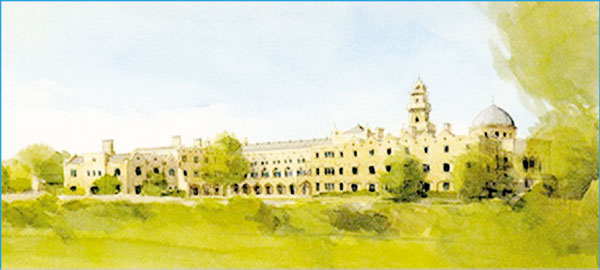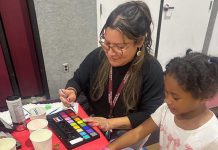
The South Valley Islamic Community is preparing to make a crucial push for their long-awaited Cordoba Center project in San Martin to county planners, and is expecting a vocal crowd of local residents to show up to a series of upcoming community meetings.
Upcoming meetings are expected to be so crowded that planning staff and advisors scrambled to find a venue large enough to accommodate those who want to make comments and ask questions about the project, according to San Martin Planning Advisory committee member Bob Cerruti.
The project that will sprawl over a 15-acre site has generated significant interest from the community as it would bring the first cemetery to San Martin and attract visitors from throughout the South Valley to the sleepy town of 7,000 residents.
Santa Clara County Supervisor Mike Wasserman, who represents the South County district on the board, declined to comment on the merits or faults of the project, but said his office has received numerous comments and questions from residents.
Some of the outcry in recent months has been negative, and South Valley Islamic Community member Hamdy Abbass noted that some residents of the area have tried to poison public opinion with “misinformation.” He thinks the tremendous public interest has prompted county planning staff to scrutinize the Cordoba Center proposal more closely than they would most other land use projects.
“I know the planning (department) did their due diligence, and more,” Abbass said. “They looked into everything twice, and sometimes three times, because they know people will ask frivolous questions.”
The Cordoba Center proposal was filed with the Santa Clara County planning office last summer, and will likely be initially approved or denied at the Aug. 2 planning commission meeting, according to county planner Colleen Oda. In the days leading up to that meeting, the planning department’s two advisory committees for the southern region of the county will solicit public comment and field questions from area residents and others who might be affected by the proposed Islamic community center, place of worship, cemetery and outdoor grounds.
Information, comments and questions presented at those meetings will be presented to the planning commission to assist them in making a decision, Oda said. The staff will also present a recommended action with possible conditions to present to the commission.
If the planning commission approves the project, it will next go before the board of supervisors for final approval. If denied, the proponents could appeal the decision.
Studies conducted by the county and consultants have concluded that the project will not have a significant impact on environmental resources – including soil and groundwater quality – nor on traffic, air quality, nearby native species, cultural resources, greenhouse gas emissions, noise, nearby land uses or public services.
The “negative declaration” environmental study conducted for the project suggested some landscaping improvements over the submitted plan, lighting mitigation, and county approval of building materials before a building permit is issued.
The project is proposed on the 14000 block of Monterey Highway in San Martin, just north of the intersection of California Avenue.
The SVIC’s submitted plans include two buildings – a 5,000-square-foot prayer hall and a 2,800-square-foot multipurpose building – as well as an outdoor play area that includes picnic grounds and two restroom structures. The cemetery is planned to occupy about two acres of the space.
There are currently only two places of worship in San Martin – the Presbyterian Church of San Martin and The Bridge at San Martin, according to Cerruti.
San Martin is a 12-square-mile unincorporated area between Morgan Hill and Gilroy.
Plans for the Cordoba Center also indicate that largest number of people the developer anticipates being there at one time is 200. That kind of gathering would occur once a year for an annual open house, according to the plans posted on the county’s website. The center would host special events, such as weddings, funerals, Ramadan festivals, soup kitchens and retreats, about 30 times a year. The site will draw about 150 people at a time for those events.
For regular weekly and monthly worship services, and Sunday school, the site is likely to draw between 50 and 80 people, according to Abbass, a Hollister resident and member of the South Valley Islamic Community.
The SVIC serves about 70 families in the South Valley area, from San Jose to Hollister, Abbass said. The worshippers currently conduct prayer services in a member’s converted barn on private property in another nearby community.
The project has been a subject of fierce contention among San Martin residents in recent months, as it was in 2007 when the SVIC first attempted to develop a community and worship center in the community. It was delayed after a year or so due to the SVIC’s difficulty raising funds complicated by the 2008 recession.
San Martin Advisory committee members also declined to comment before their July 31 meeting at the Grange Hall in Morgan Hill.
Sylvia Hamilton, who sits on that committee, said an issue the San Martin Neighborhood Association brought up in the public comment period for the environmental study was that of “local-serving uses.” She explained the concept is a requirement in the county’s General Plan, and says that non-residential projects should support agricultural uses, satisfy the needs of local residents and limit the presence of incidental traffic from out of the area.
The local political group the Gilroy/Morgan Hill Patriots invited former Santa Clara County Supervisor Don Gage to their monthly meeting July 26 to discuss the project and answer questions.
Gage, now a Santa Clara Valley Water District director and Gilroy mayoral candidate, said he remembers when the SVIC proposed a similar project in San Martin more than four years ago. He recalls the county staff being concerned about the soil and groundwater levels, which must be considered when anyone is developing a cemetery or septic system. He also remembers that residents were worried about the project’s possible aesthetic impact. But, he said, if the project complies with all the county’s guidelines it cannot be rejected.
The Patriots’ chief concern is to ensure the Cordoba Center’s developers are not given preferential treatment as the project slogs through the planning process.
“We want to make sure there is no special interest, and that everybody gets the same deal,” said Gilroy/Morgan Hill Patriots president Georgine Scott-Codiga.
She added that the property where the project is proposed is prone to flooding, and that issue should be addressed by planners.
An activist group that formed about a year ago in response to the Cordoba Center project, called the People’s Coalition for Government Accountability, circulated a letter listing a number of unclear gripes and outdated information about the project. The group does not offer any names for people associated with it, and its mailed letters show a Gilroy post office box for a return address.
Abbass said the letter contains “misinformation,” such as the claim that more than 1,000 people would attend events at the site at a time.
The People’s Coalition for Government Accountability letter also indicates the Cordoba Center plans include a convalescent home and school, but Abbass confirmed there are no plans for such facilities now or for the future.
Another topic that has been hyped into an issue by the People’s Coalition for Government Accountability concerns the water table on the property, pushing a fear that these uses might contaminate the local drinking water source.
However, a geological study commissioned by the SVIC for the county shows that the groundwater table is far enough below the ground surface, and the soil percolation rates are sufficient, to prevent contamination or harmful runoff. Abbass added the site has been tested three times by the county and consultants, and has always been found satisfactory for the Cordoba Center proposal.
“There are certain people who are trying to throw anything (at the project), hoping that it will stick in our face,” Abbass said.









